Having the personal desire to try private vehicle leasing around five years ago, while being unsure about the further implications of ‘non-ownership’, I was determined to minimise my ‘risk’ by engaging with Skoda and its box-fresh, first generation Citigo model. As a long-standing Skoda buyer, I was also afraid of missing the vibrant performance of a run of previous vRS models. However, the prospect of low-cost motoring was my precedent and I settled on a fully-specified 72bhp version of the Skoda tiddler on a three years lease programme.
It should be noted that the monthly payments of £100, a fully-comprehensive annual insurance premium of £97 and a consistent 58mpg fuel return were proof positive that a private lease would work for me. The rate was low, because Skoda was keen to kickstart its PCH programme (it underwrote the monthly rate). For three years, I revelled in Citigo operation. I loved the car’s cheeky nature and scarcely missed the performance angle, because Citigo delivered such an engaging package overall.
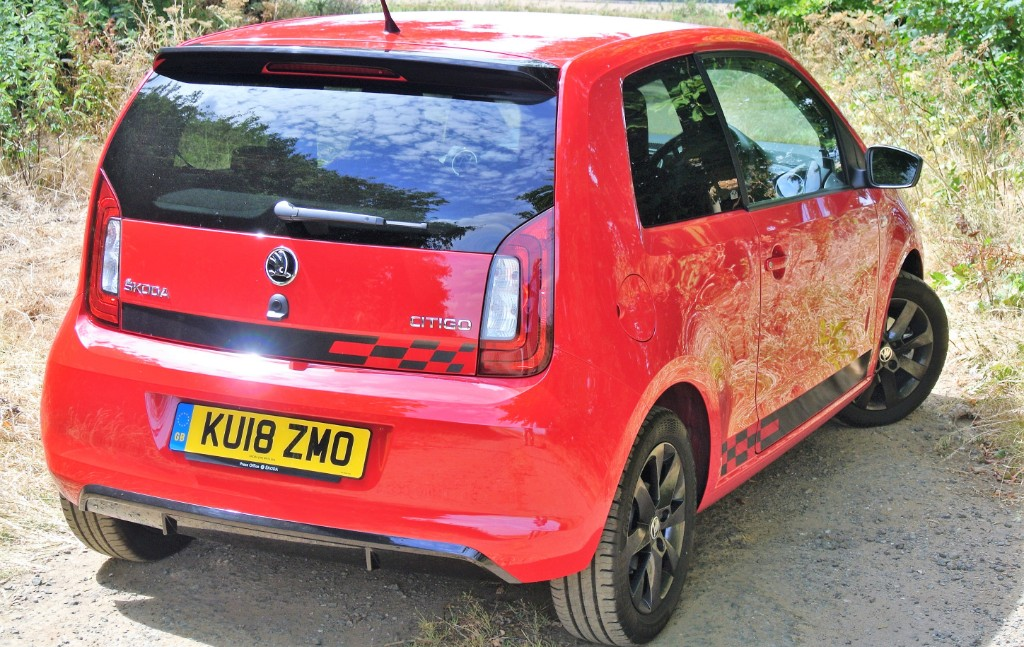
Ironically, during my period of Citigo operation, I also test drove a couple of 57bhp variants, which proved to be far from sluggish that I thought they might be. However, I also spent some time with a Beats version of the VW up! derivative, complete with the later 92bhp turbo-triple, which proved to me that boosting the delightful 1.0-litre engine was a most effective upgrade.
Although Skoda refused to apply vRS technology to its version of the car, which I truly believe is an error of product management, its sporting option that is largely cosmetic carries a value-added Monte Carlo badge. To be fair, it is an excellent package, mainly because high performance is mostly unviable these days, on our over-crowded main routes and stop-start city roads. However, willing zestiness of an order delivered by a Citigo has its benefits.
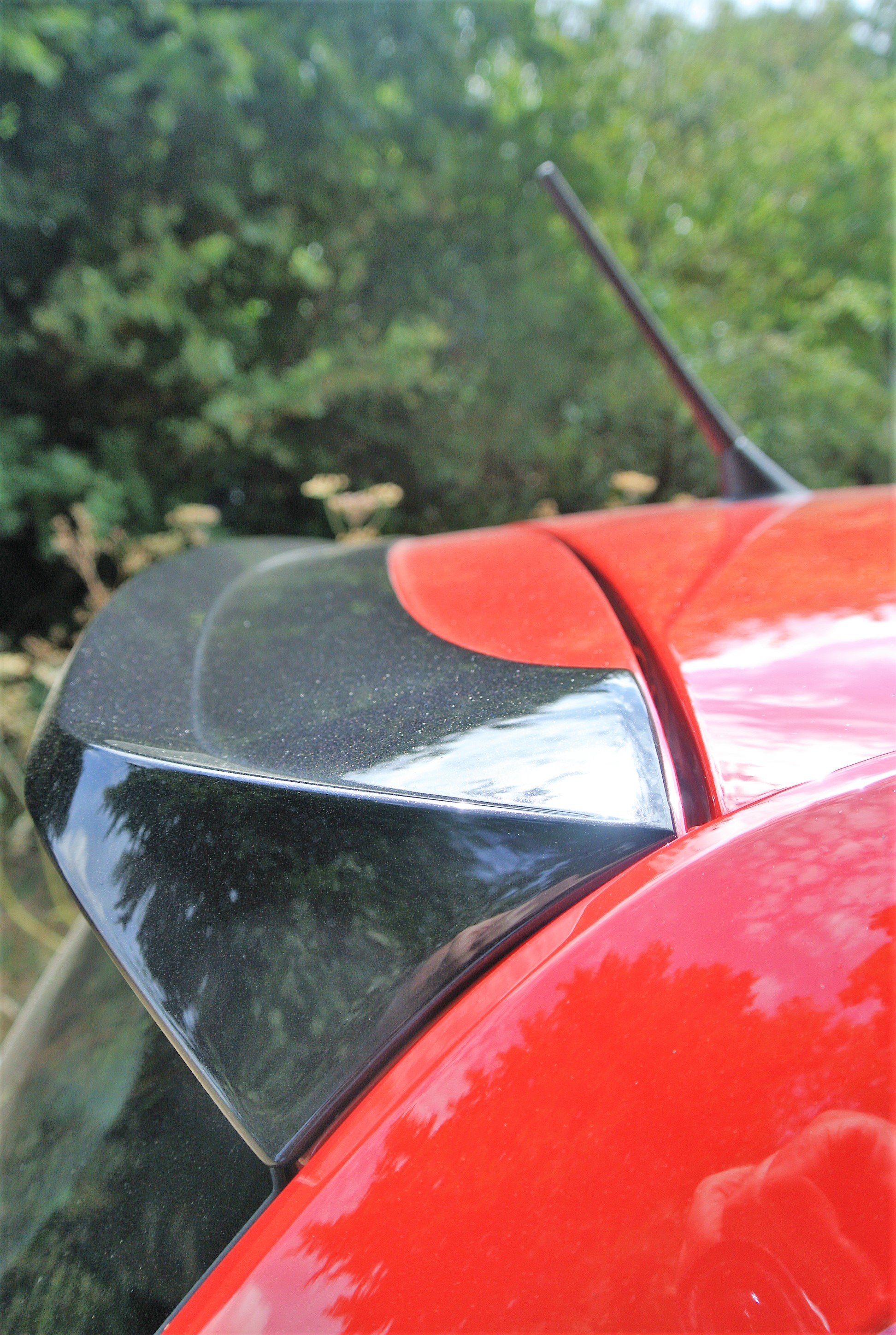
When the up!/Mii/Citigo line-up was introduced by the VW Group in late-2011 (UK Citigo sales started in the summer of 2012), the models made an immediate impact, aided by a well-deserved victory in the European Car of the Year competition. Being of a minimalist construction, perhaps even slightly Bauhaus in style, it was an overnight success story. After six years, which is a typical model life, a series of changes were made to all versions, including Citigo, which adopted a cleaner frontal design that now incorporates LED daytime running lamps within the headlamp units.
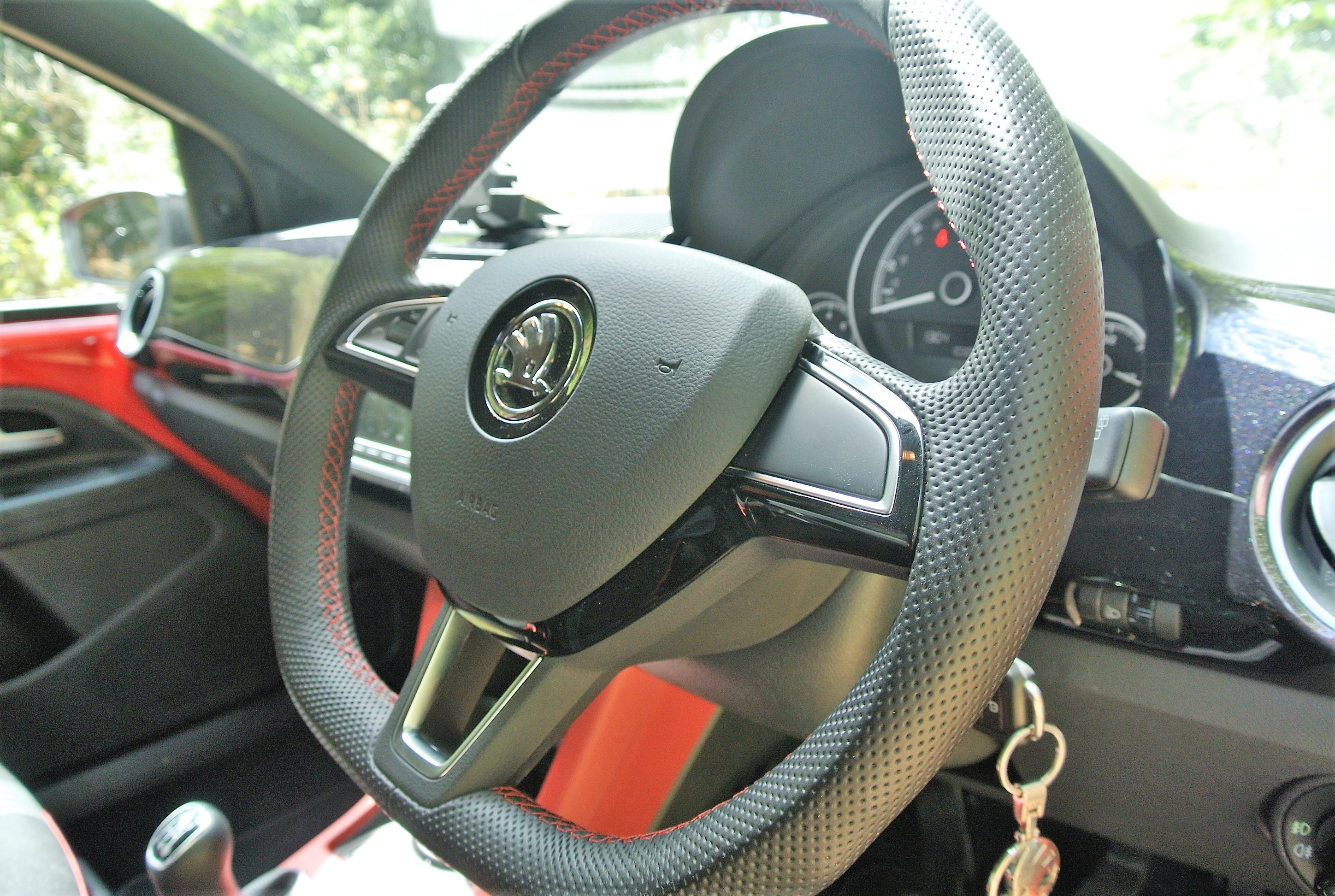
Inside the cabin of today’s Citigo Monte Carlo it is pretty much the same as before, after all, why change something that works exceedingly well simply for the sake of updating it? The main instrument binnacle contains a large speedometer, a smaller rev-counter and a fuel gauge, in a style reminiscent of the original VW Beetle. It needs no more. In the middle of the simple dashboard layout is the stereo head unit, now with DAB, above which are the three rotary dials that control the heating and ventilation, which also includes a simple pushbutton for air-conditioning.
Body coloured metal abounds within the cabin, although the dashboard is finished in Piano Black, its shiny convex surface not acting as the distraction it might be. Although the plastic trim is unrelentingly hard, the mouldings are of high quality and the fit and finish is excellent, so much so that you simply accept them, rather than desiring a soft-touch alternative. The centre console adds a splash of red, as part of its Monte Carlo detailing and contains a solitary cupholder ahead of the gearlever, with another one between the front seats.
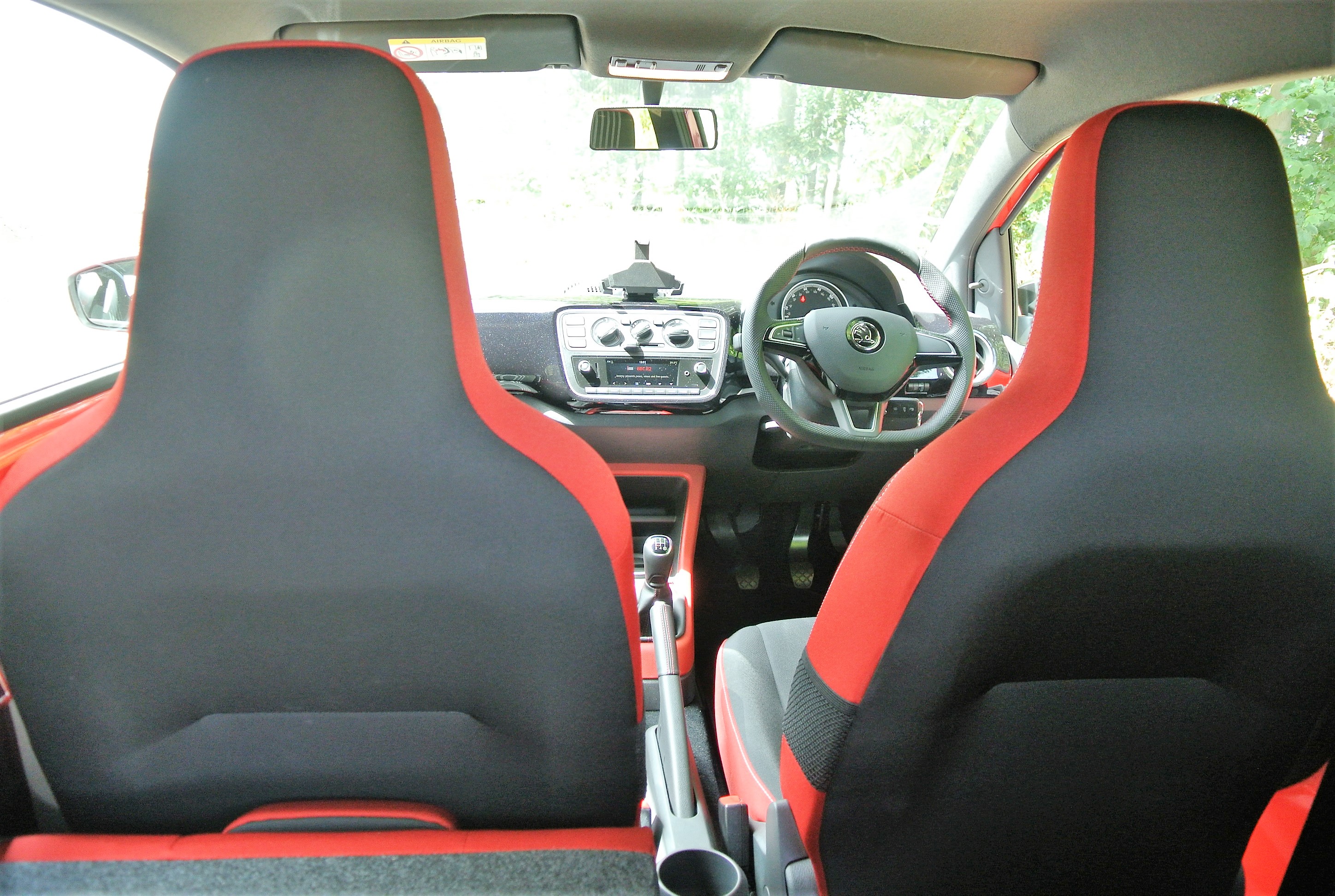
As a three-door model (fast becoming a rarity), access to the rear seats is via memory-tilt-and-slide front units. The space is not exactly generous but is enough for passengers up to small adults in stature. The rear seats split-fold 60:40 for flexibility, although the resultant load space is not flat. Yet, the boot is deep enough to carry a week’s worth of shopping without issues.
Space in the front is outstanding, with head, shoulder, hip and knee-room aplenty, the high-backed seats are exceptionally comfortable and surprisingly supportive. Once again, by using red fabric to part-upholster the seats, relief is provided to what is a sea of grey in non-Monte Carlo versions of the car.
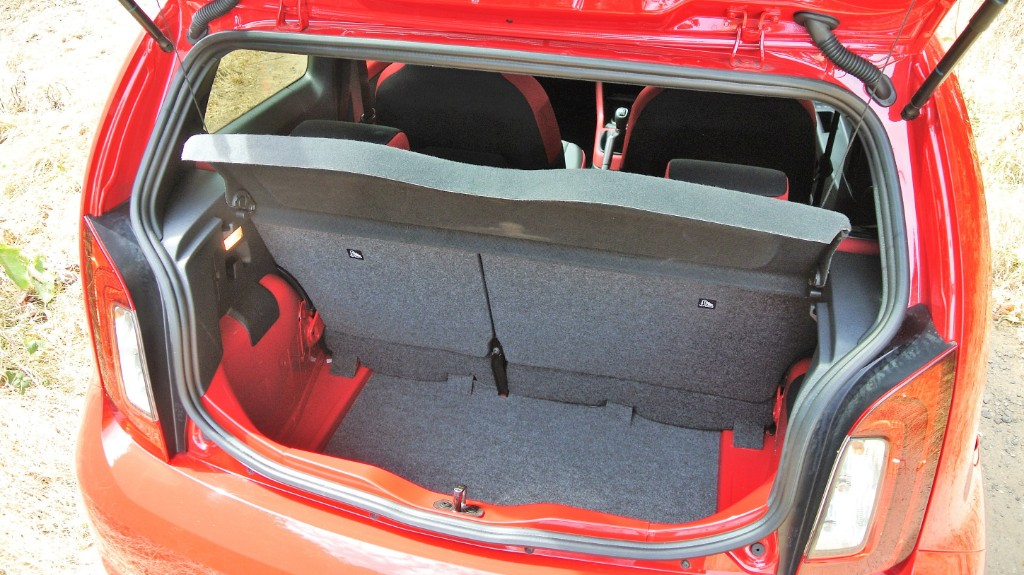
As mentioned earlier, this version of the car uses the 57bhp non-turbo, 1.0-litre three-cylinder engine, mated to a five-speed manual transmission. The gearing is leggy enough at the top end to deliver a buzzy but effective top speed of 101mph, despatching the 0-60mph acceleration benchmark in a modest 14.1s. Yet, I have to tell you that the car never feels slow, thanks to well-chosen intermediate gear ratios and the fact that the driver can hear the engine pulling in a most willing manner. It is more than capable of maintaining station alongside other traffic and a decent amount of torque makes overtaking far easier than you might expect it to be. In fact, delivering a fuel economy of 64.2mpg and emitting 101g/km CO2 (£140 annual road tax) means that the advantage of the punchier 72bhp unit is not as great as anticipated. I have found the lesser-power output perfectly acceptable.
Part of the Monte Carlo package is lowered suspension, which gifts the Citigo a better ride quality than a BMW Mini, with enhanced handling agility that makes maintaining higher cross-country trip average speeds a genuine joy. The list price of the car, complete with mobile-phone holder (there is an optional PDF unit that can provide sat-nav and other useful functions for slightly over £100 extra cost) is £11,500, to which you must add £90 for the optional and temporary space-saver steel wheel. Of course, Forces Cars Direct discounts will reduce prices to even more affordable levels.